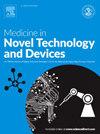通过超分子和共价相互作用设计卡拉胶基功能生物材料,用于生物医学应用
Q3 Medicine
引用次数: 0
摘要
本研究是对红海草卡拉胶(CG)的探索,旨在通过功能化拓展其生物医学应用领域,实现可持续发展。本研究工作的主要目标是通过共价和超分子相互作用,在水凝胶中加入硫酸盐分子,制备一种共聚物材料,用于药物输送(DD)。通过场发射扫描电子显微镜(FESEM)、电子分散 X 射线分析(EDAX)、原子力显微镜(AFM)、傅立叶变换红外光谱(FTIR)、13C 核磁共振(NMR)和 X 射线衍射(XRD)仪器对共聚物进行了表征。FESEM、AFM 和 XRD 分析揭示了水凝胶的粗糙异质形态和无定形性质。傅立叶变换红外光谱(FTIR)和 13C 核磁共振成像(13C NMR)证实了通过接枝和交联反应在 CG 上加入了聚(AAm)和聚(VSA)。水凝胶具有血液相容性、粘附性、抗氧化性和抗菌性。水凝胶还显示出 179% 的(横纹肌肉瘤)RD 细胞存活率,这表明水凝胶对哺乳动物细胞无毒性,并能促进细胞增殖。万古霉素药物的释放曲线遵循非菲氏扩散规律,用一阶动力学模型进行了最佳描述。物理化学特性结果表明,这些水凝胶具有多种生物医学应用潜力,包括 DD。本文章由计算机程序翻译,如有差异,请以英文原文为准。
Designing carrageenan-based functional biomaterials by supra-molecular and covalent interactions for biomedical applications
The present investigation is an exploration of red sea weed carrageenan (CG) to expand its horizon for biomedical applications through functionalization for sustainable development. The primary goal of the present research work was to prepare a copolymeric material by the inclusion of sulfate moieties into hydrogels through covalent and supra-molecular interactions for drug delivery (DD) applications. Copolymers were characterized by field emission-scanning electron micrographs (FESEM), electron dispersion X-ray analysis (EDAX), atomic force microscopy (AFM), Fourier transform infrared spectroscopy (FTIR), 13C nuclear magnetic resonance (NMR) and X-ray diffraction (XRD) instrumentation. The FESEM, AFM and XRD analysis unveiled rough heterogeneous morphology and amorphous nature of hydrogels. FTIR and 13C NMR confirmed inclusion of poly (AAm) and poly (VSA) onto CG by grafting and crosslinking reactions. Hydrogels demonstrated blood compatible, mucoadhesive, antioxidant and antibacterial properties. Hydrogels also revealed 179 % (Rhabdomyosarcoma) RD cell viability which indicated non-cytotoxicity to mammalian cells and promoted proliferation of cells. The release profile of the vancomycin drug followed non-Fickian diffusion and was best described by First order kinetic model. The results of physico-chemical properties demonstrated that these hydrogels have the potential for diverse biomedical applications, including DD.
求助全文
通过发布文献求助,成功后即可免费获取论文全文。
去求助
来源期刊

Medicine in Novel Technology and Devices
Medicine-Medicine (miscellaneous)
CiteScore
3.00
自引率
0.00%
发文量
74
审稿时长
64 days
 求助内容:
求助内容: 应助结果提醒方式:
应助结果提醒方式:


